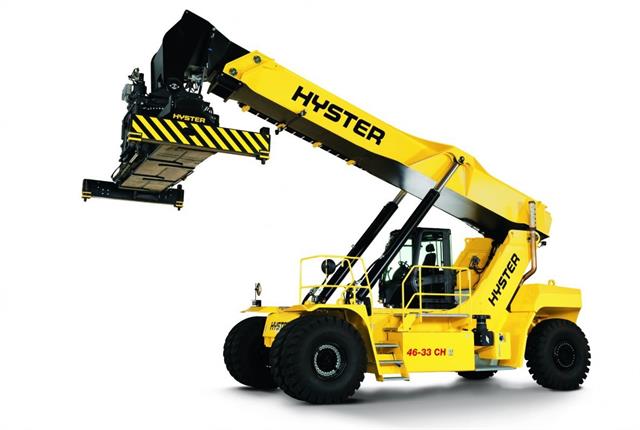 Hyster is developing a fuel cell reachstacker |
The global reachstacker market witnessed sales of 1,364 units in 2018 and is expected to grow by another 7% in 2019, according to analysis by
Fact.MR.
The growth has been fuelled by the strengthening demand for container handling equipment. Increasing traction for port materials handling equipment, coupled with rapid expansion of a growing number of sea ports, in line with the proliferating seaborne trading, continue to augment market growth.
Rapid expansion of intermodal barge shipping to the smaller as well as canalised waterways has been creating a considerable demand for a water reachstacker with tri-modal handling functionality for road, rail and water, according to the analysis. In the last couple of years, port activity and cargo handling of containerised and bulk cargo have grown significantly, while driving the need for an increased development of improved and safer port infrastructure to meet the steady pace of seaborne trading.
Impressive flexibility along with the higher stacking and storage capacity of reachstackers are likely to add to the appeal of these container handling units in the years to come.
While the report highlights growth of adoption of reachstackers in ports, it also notes that more warehouses and factories are adopting reachstackers.
In terms of engine type,
Fact.MR notes that while the market has been dominated by internal combustion engine reachstackers, sales of hybrid variants are rising "in line with the growing manufacturer shift towards integrating advanced propulsion systems into their reachstacker models".
Eco-friendly variants are also anticipated to witness considerable demand in the forthcoming years due to the continuing global tension over the carbon emissions from the industrial operations, according to the report.